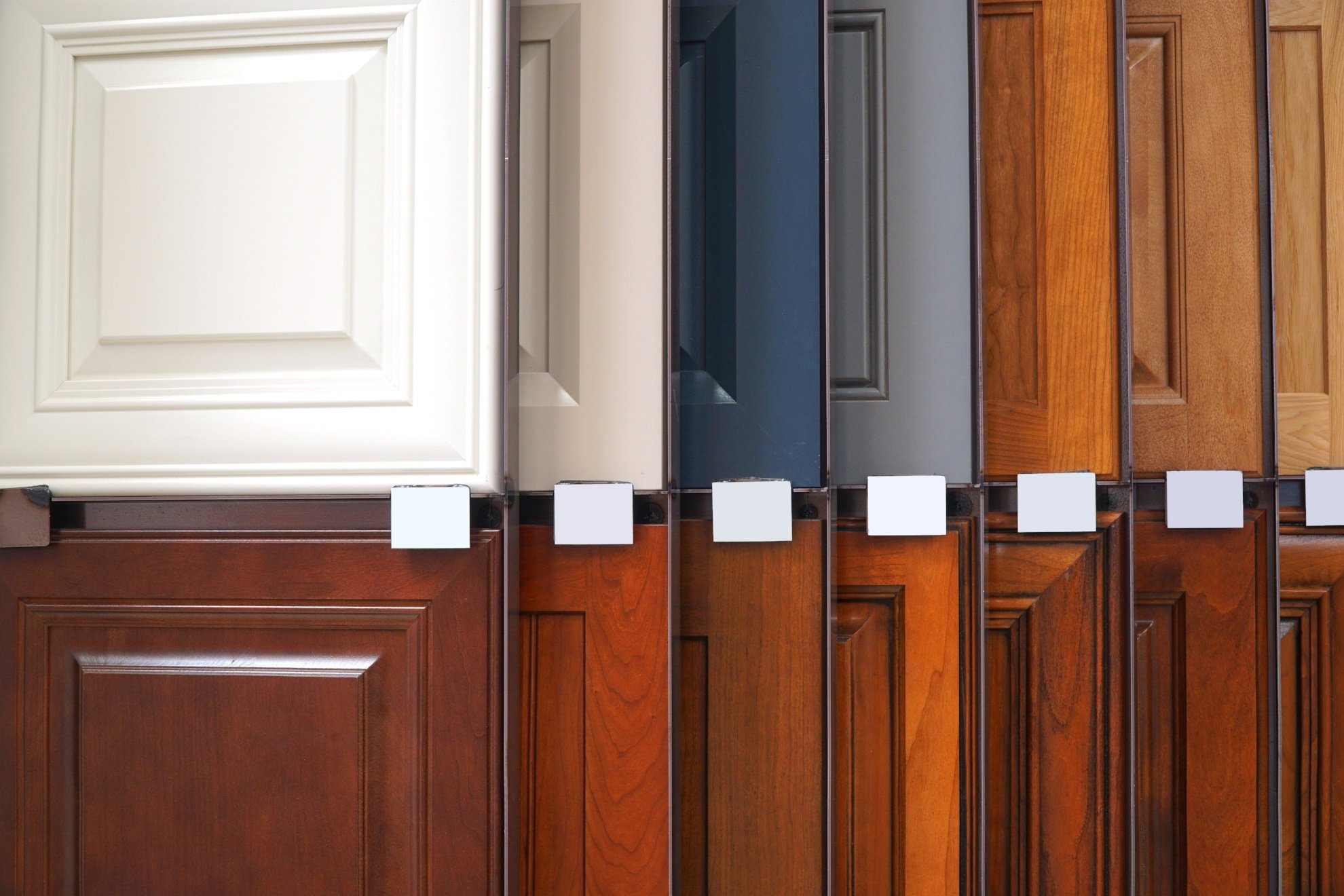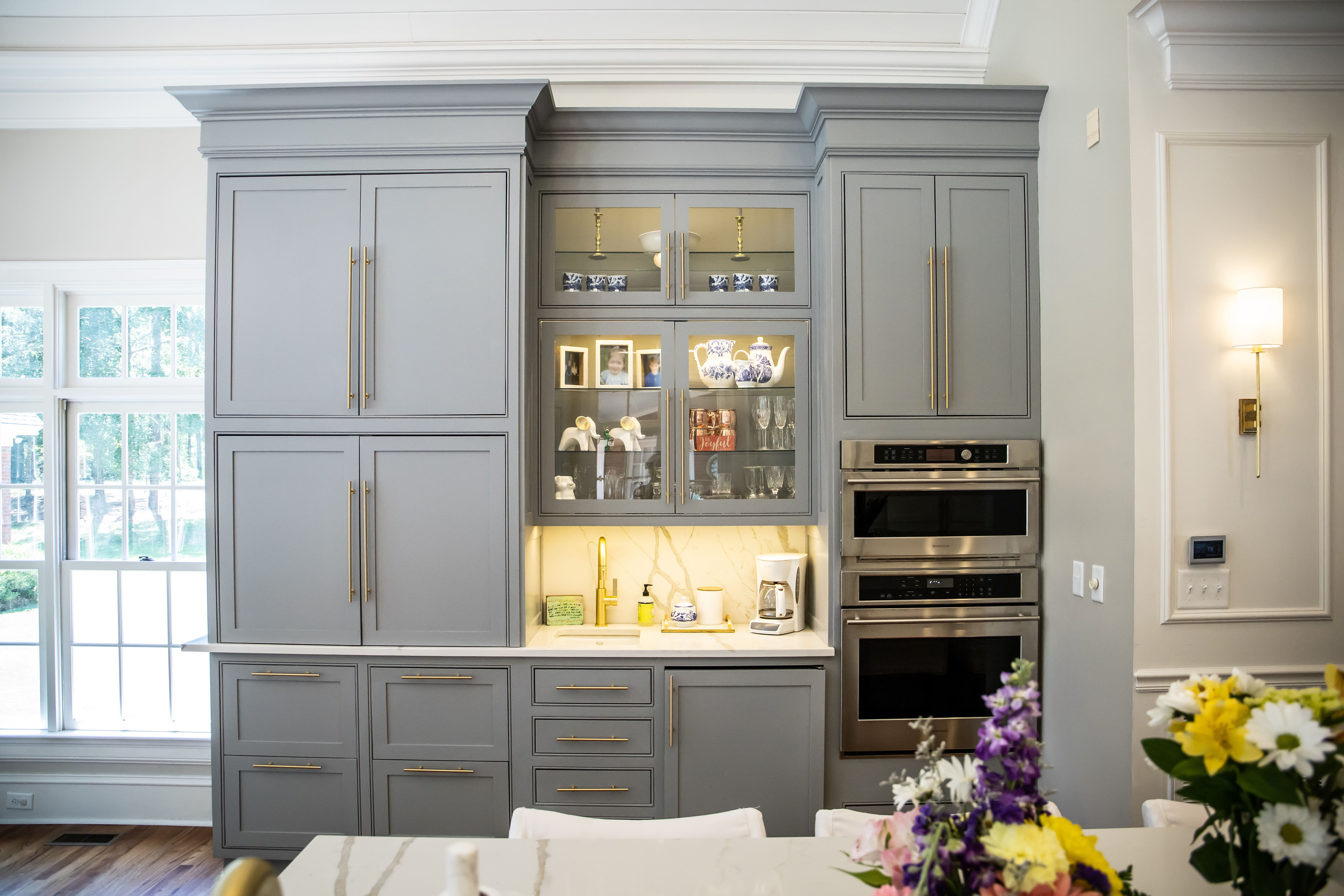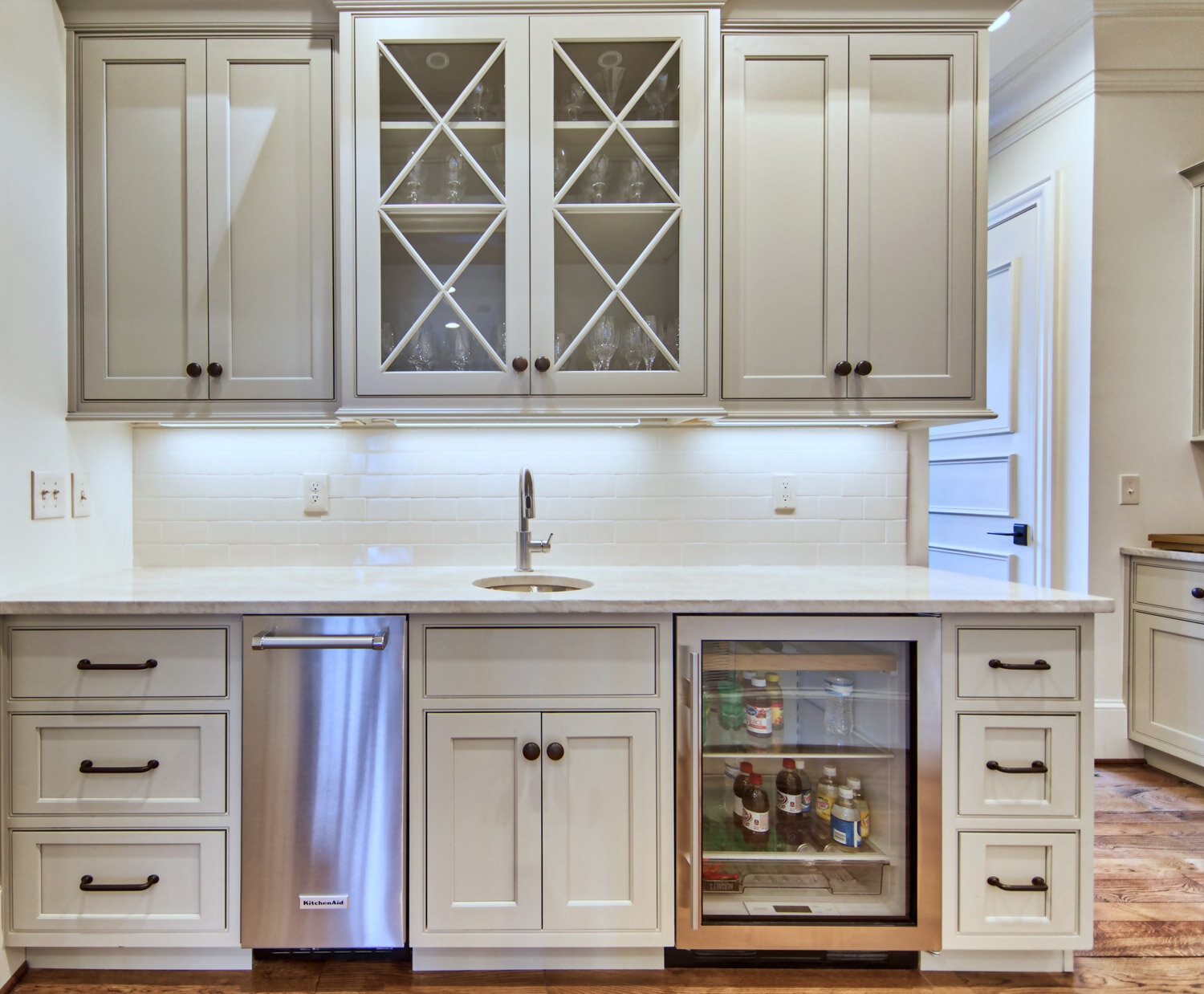Cabinet Styles and Materials for Cal Door Kitchen Cabinets

Cal Door offers a wide selection of kitchen cabinets, catering to diverse tastes and budgets. Their commitment to quality materials and meticulous craftsmanship ensures durable and aesthetically pleasing results. Understanding the various styles, materials, and manufacturing processes will help you make an informed decision when choosing Cal Door cabinets for your kitchen renovation.
Cal Door Cabinet Styles and Door Materials
Cal Door provides a diverse range of cabinet styles, each distinguished by unique door designs and material choices. This variety allows for seamless integration with various kitchen designs, from traditional to contemporary. The following table illustrates some examples:
| Style | Door Material | Finish Options | Price Range (Estimated) |
|---|---|---|---|
| Shaker | Solid Wood (Maple, Cherry, Oak) | Paint (various colors), Stain (various shades) | $150 – $300 per linear foot |
| Slab | Thermofoil, Melamine, or Wood | Variety of colors and textures | $100 – $250 per linear foot |
| Raised Panel | Solid Wood (various species) | Paint, Stain, Glaze | $200 – $400 per linear foot |
| Glass Front | Wood frame with glass inserts | Paint, Stain, various glass types | $250 – $450 per linear foot |
*Note: Price ranges are estimates and can vary based on cabinet size, customization, and regional factors.*
Cal Door Cabinet Manufacturing Process and Quality Control, Cal door kitchen cabinets
Cal Door’s manufacturing process emphasizes precision and quality at every stage. Their cabinets are constructed using state-of-the-art machinery and techniques, ensuring consistency and accuracy in dimensions. Rigorous quality control measures are implemented throughout the process, from material selection to final assembly. This includes inspections at various stages to identify and rectify any defects, guaranteeing that only high-quality cabinets leave their facilities. For instance, experienced inspectors check for imperfections in wood grain, ensuring consistent finish application, and verifying the proper functioning of hinges and drawer slides before packaging. This multi-layered approach to quality control contributes significantly to the longevity and durability of Cal Door cabinets.
Comparison with Other Popular Cabinet Brands
Cal Door cabinets compete with other well-known brands in the market, such as KraftMaid, Thomasville, and Schuler. While all these brands offer a variety of styles and materials, Cal Door distinguishes itself through its balance of quality, customization options, and competitive pricing. Compared to high-end brands, Cal Door might offer a slightly more affordable option without compromising significantly on quality. Conversely, compared to budget brands, Cal Door provides superior craftsmanship and a wider range of customization possibilities. The specific advantages and disadvantages will vary depending on the individual project’s needs and budget, and direct comparisons require detailed specifications for each brand and product line. For example, a direct comparison of specific shaker-style cabinets in maple wood from Cal Door and KraftMaid would reveal subtle differences in construction techniques, finish options, and ultimately, pricing.
Installation and Customization of Cal Door Kitchen Cabinets

Choosing Cal Door kitchen cabinets is a significant step in your kitchen renovation journey. This section will guide you through the installation process, providing a clear understanding of the steps involved, and explore the extensive customization options available to perfectly tailor your cabinets to your unique style and needs. We’ll also showcase three distinct kitchen designs to inspire your project.
Cal Door Kitchen Cabinet Installation
Proper installation is crucial for ensuring the longevity and functionality of your new cabinets. Following these steps will help you achieve a professional-looking result, even if you’re tackling the project yourself. Remember to always consult the manufacturer’s instructions for specific details and safety precautions.
- Preparation: Begin by carefully measuring your kitchen space and verifying cabinet dimensions against your layout plan. Ensure the walls are level and plumb, making any necessary adjustments. Gather all necessary tools, including a level, stud finder, drill, screwdriver, measuring tape, and safety glasses.
- Wall Cabinet Installation: Locate and mark the stud locations on the wall. Using appropriate screws, attach the wall cabinets to the studs, ensuring they are level and aligned. Use shims as needed to correct any inconsistencies in the wall.
- Base Cabinet Installation: Install base cabinets, starting from a corner. Ensure the cabinets are level and aligned with each other. Use shims to adjust for uneven floors. Secure the cabinets to the wall using appropriate fasteners.
- Countertop Installation: Once the base cabinets are installed, carefully measure and cut the countertop to fit. Secure the countertop using appropriate adhesive and fasteners, ensuring a seamless fit.
- Hardware Installation: Install cabinet doors, drawers, and hardware according to the manufacturer’s instructions. Take your time to ensure everything is properly aligned and functioning correctly.
- Final Touches: Inspect the installation for any gaps or inconsistencies. Caulk any gaps to ensure a clean finish. Clean the cabinets and countertops thoroughly.
Customization Options for Cal Door Cabinets
Cal Door offers a wide array of customization options to ensure your cabinets perfectly match your vision. These options allow you to personalize your kitchen’s look and functionality.
| Customization Option | Description | Potential Cost Impact |
|---|---|---|
| Cabinet Size Adjustments | Custom sizes are available to fit unique spaces, including unusual alcoves or corners. | Moderate to High (depending on the extent of customization) |
| Finishes | Choose from various paint colors, stains, and veneers to match your kitchen’s décor. Options range from classic to contemporary. | Low to Moderate (depending on the finish chosen) |
| Hardware Choices | Select from a wide range of knobs, pulls, and handles in different styles, materials (e.g., metal, ceramic), and finishes. | Low to Moderate (depending on the hardware selected) |
| Cabinet Door Styles | Select from various door styles such as shaker, flat panel, raised panel, etc., to match your personal preference and kitchen design. | Low to Moderate (depending on the complexity of the style) |
| Interior Features | Options such as pull-out shelves, spice racks, and drawer dividers can enhance functionality and organization. | Low to High (depending on the number and type of features) |
Kitchen Design Examples Using Cal Door Cabinets
Cal door kitchen cabinets – Design 1: Small, Modern Kitchen This design utilizes sleek, flat-panel cabinets in a light gray finish to maximize the feeling of space in a small kitchen. Wall cabinets extend to the ceiling to utilize vertical space. Base cabinets are chosen to allow for a small island with seating, increasing both functionality and social space. The hardware is minimalist, brushed nickel pulls.
Design 2: Medium-Sized, Traditional Kitchen This design features shaker-style cabinets in a warm cherry stain, creating a classic and inviting atmosphere. A combination of wall and base cabinets provides ample storage. A corner pantry maximizes storage in a corner space. The hardware is traditional brass knobs.
Design 3: Large, Contemporary Kitchen This design showcases a mix of tall pantry cabinets, island cabinets with seating, and wall cabinets in a high-gloss white finish. Open shelving is incorporated to showcase dishes and décor. The hardware is modern, sleek black handles. The island includes a built-in microwave and additional storage.
Maintenance and Care of Cal Door Kitchen Cabinets

Investing in Cal Door kitchen cabinets represents a significant commitment to your home’s aesthetic and functionality. Proper care and maintenance will ensure these cabinets remain a beautiful and valuable asset for years to come, preserving their quality and extending their lifespan. Regular cleaning and attention to detail will prevent damage and maintain their pristine appearance.
Cleaning and Maintaining Cal Door Cabinets
Regular cleaning is crucial for preserving the beauty and longevity of your Cal Door cabinets. For everyday cleaning, a soft, damp cloth and a mild dish soap solution are usually sufficient. Avoid abrasive cleaners, scouring pads, or harsh chemicals, as these can scratch or damage the cabinet surfaces. For tougher stains, try a mixture of baking soda and water, gently scrubbing with a soft cloth. Always rinse thoroughly with clean water and dry completely with a soft towel to prevent water damage and spotting. Pay particular attention to areas prone to spills, such as around the sink and stove. Consider using a protective sealant periodically, especially on high-traffic areas, to enhance protection against moisture and stains. This will help to repel spills and make cleaning easier in the long run.
Common Problems and Solutions for Cal Door Cabinets
Several issues might arise with kitchen cabinets over time. Addressing these promptly can prevent more significant problems. The following table Artikels common problems and their solutions:
| Problem | Solution |
|---|---|
| Scratches | For minor scratches, try using a furniture touch-up marker that matches the cabinet’s finish. For deeper scratches, you may need to sand the area lightly with very fine-grit sandpaper, then apply a touch-up paint and sealant. |
| Dents | Small dents can sometimes be gently popped out using a suction cup. For larger dents, professional repair might be necessary. |
| Loose Hinges | Tighten loose screws using a screwdriver. If the screws are stripped, you may need to replace them with slightly larger screws or use wood glue to reinforce the screw holes before reinstalling. |
| Sticky Drawers | Apply a furniture wax or silicone-based lubricant to the drawer slides to reduce friction and ensure smooth operation. |
| Water Damage | Promptly wipe up any spills to prevent water damage. If water damage occurs, allow the area to dry completely and then assess the extent of the damage. Minor damage might be repairable with touch-up paint; more significant damage might require professional intervention. |
Troubleshooting Cabinet Issues: Step-by-Step Repair
Addressing minor cabinet damage promptly can prevent further problems. The following steps Artikel how to repair common issues:
Repairing Scratches
1. Clean the scratched area thoroughly with a damp cloth.
2. Allow the area to dry completely.
3. Apply a furniture touch-up marker that matches the cabinet’s finish, carefully filling in the scratch.
4. Allow the marker to dry completely.
5. If necessary, lightly sand the area with very fine-grit sandpaper to smooth any imperfections.
6. Apply a clear sealant to protect the repair.
Repairing Dents
1. Assess the size and depth of the dent.
2. For small dents, attempt to gently pop them out using a suction cup.
3. If the suction cup method fails, or for larger dents, consider professional repair.
Repairing Loose Hinges
1. Locate the screws securing the loose hinge.
2. Using a screwdriver, tighten the screws.
3. If the screws are stripped, carefully fill the holes with wood glue and allow it to dry completely.
4. Once dry, pre-drill new, slightly larger pilot holes and install new screws.
